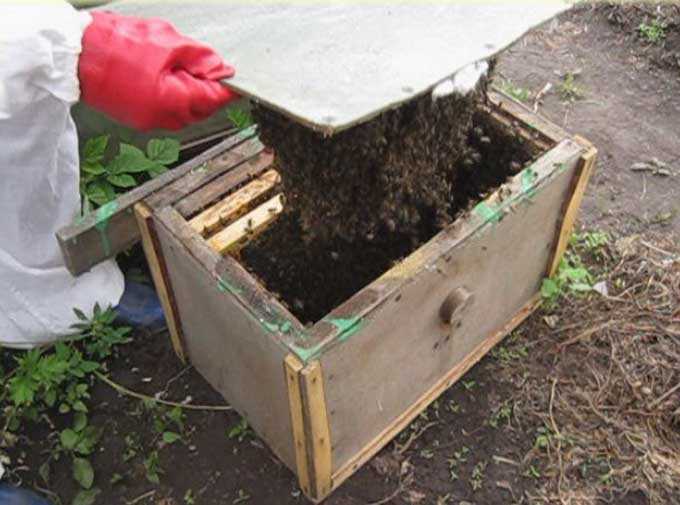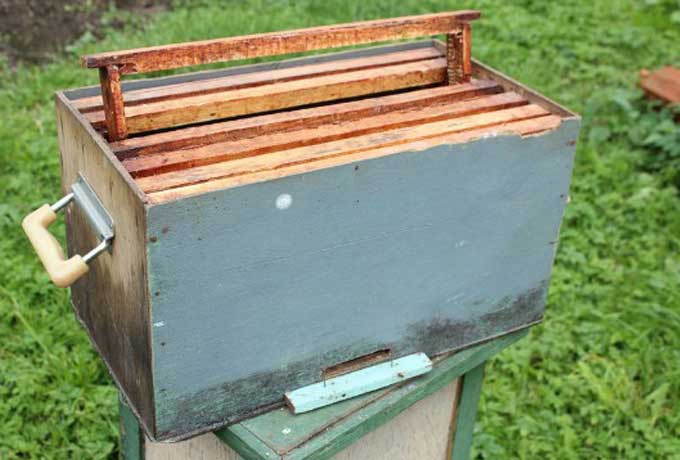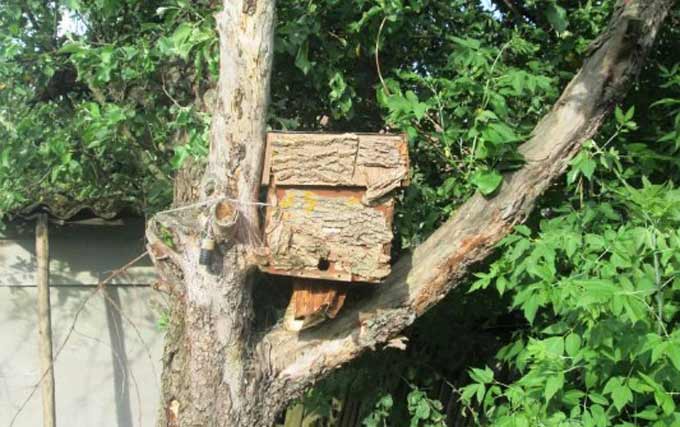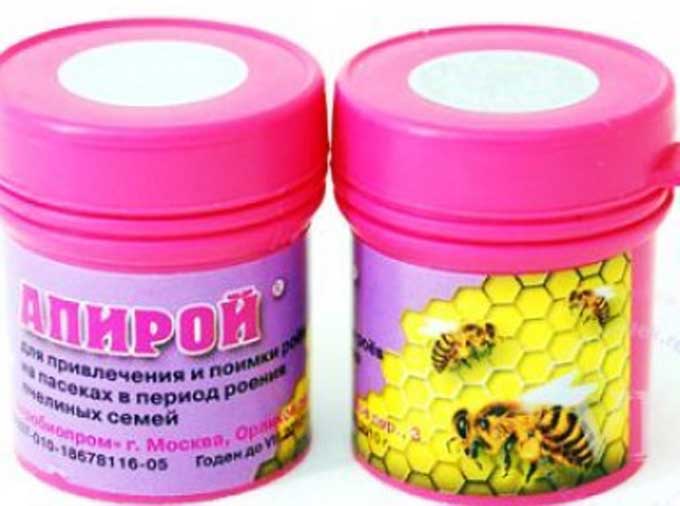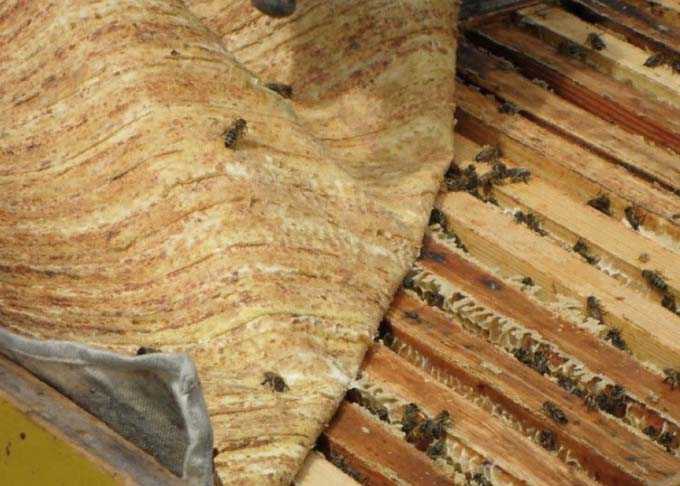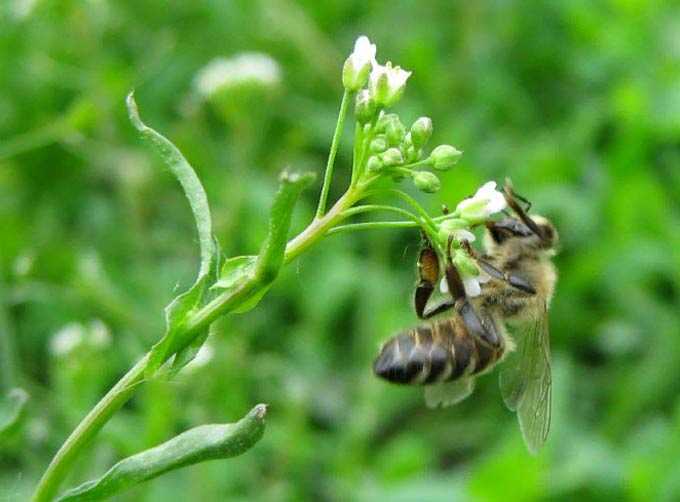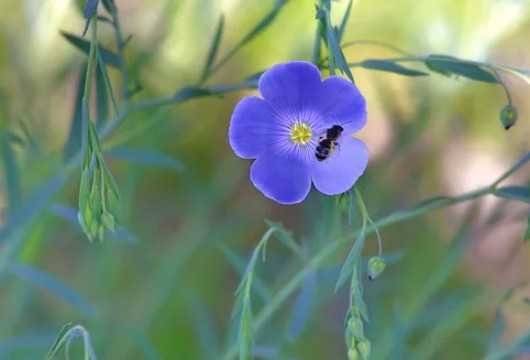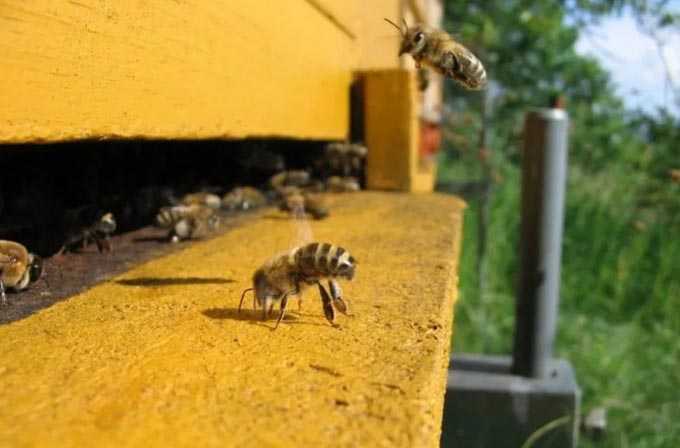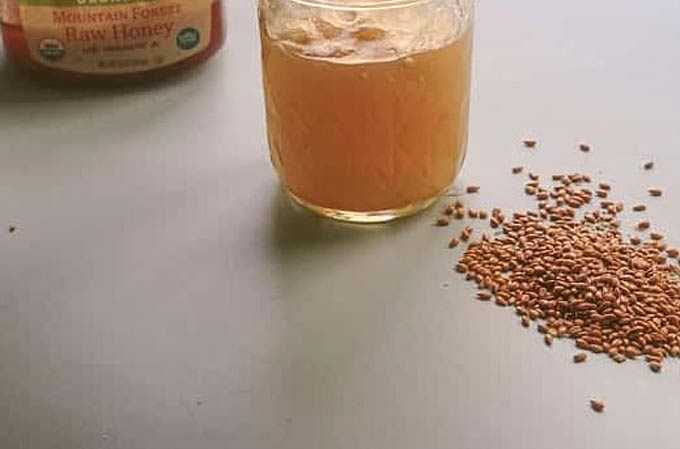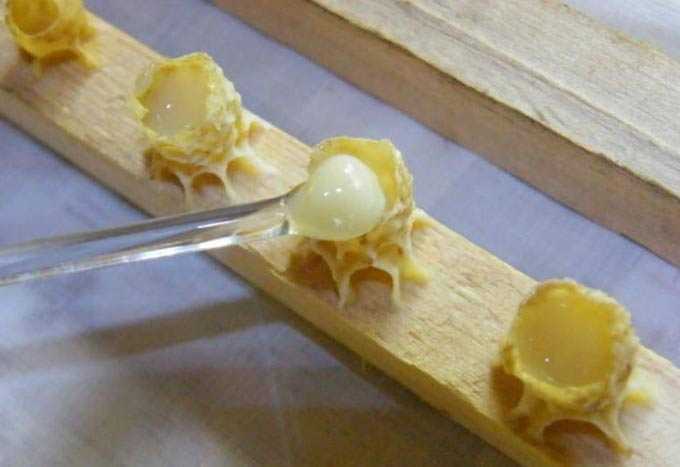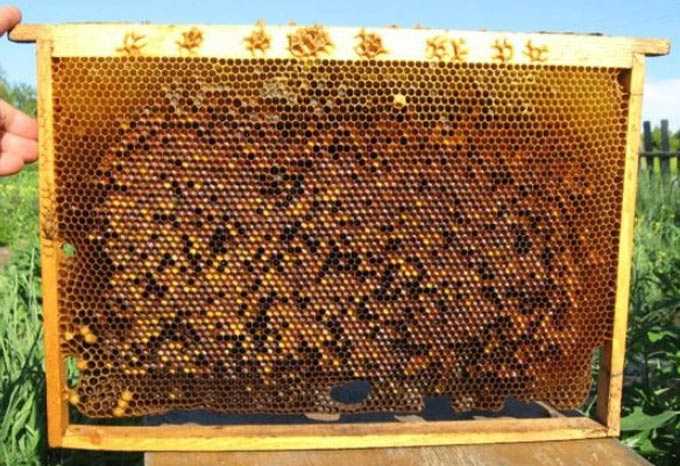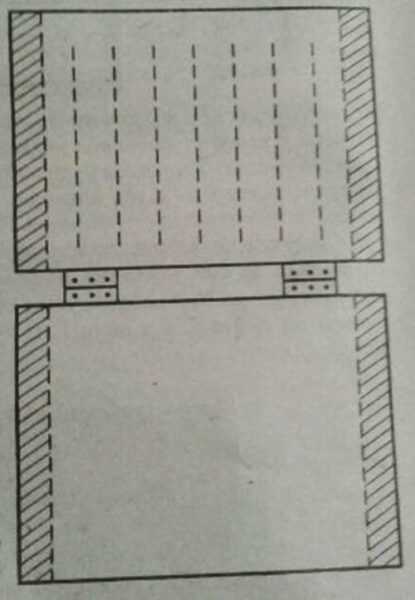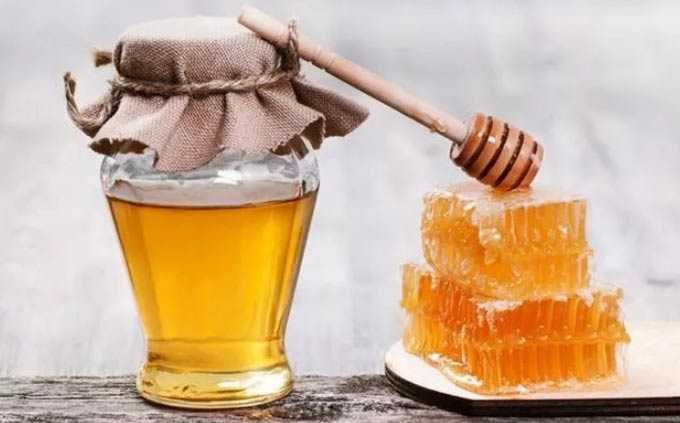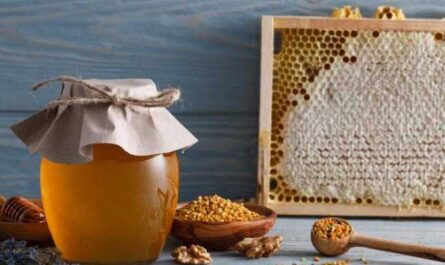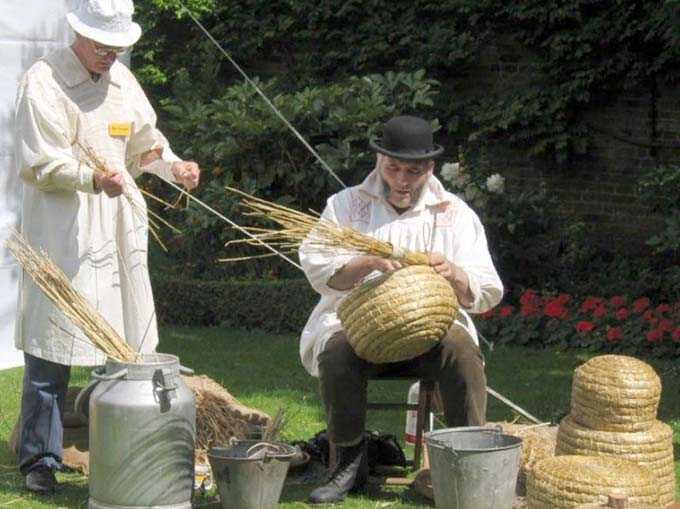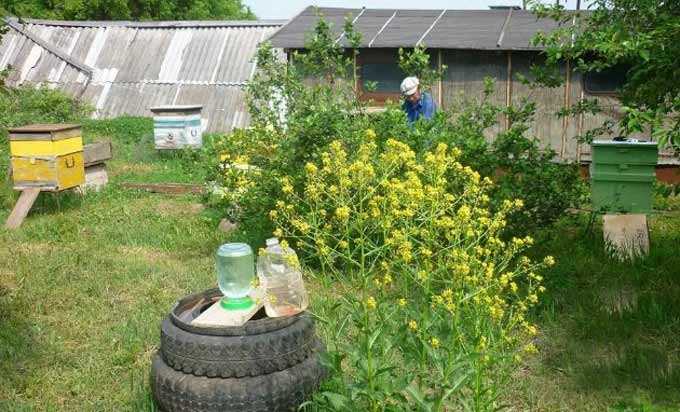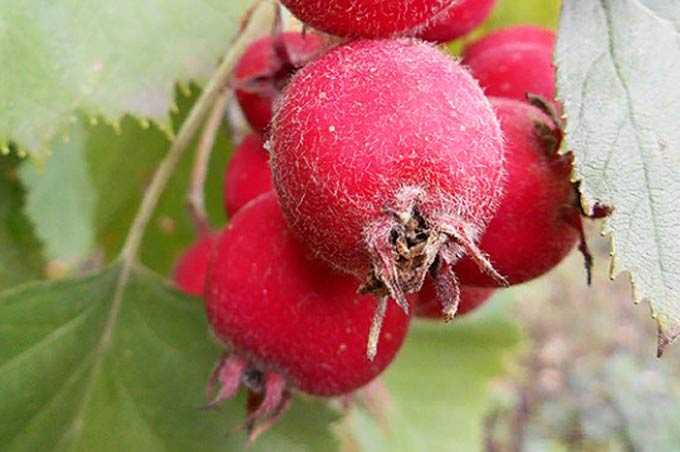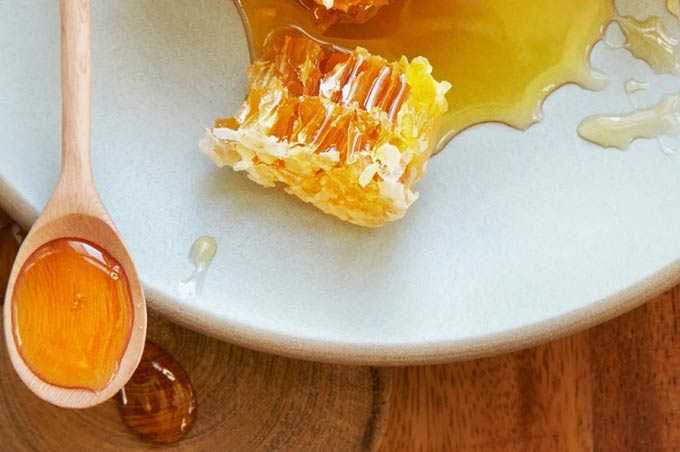The desire to expand the apiary at the expense of swarms is quite justified. The family, formed from a large natural swarm, is actively rebuilding the foundation. And it can build honeycombs on 12-15 frames without any problems. Swarm bees are less susceptible to various diseases, successfully raise brood and willingly fly for nectar.
The content of the article
- 1 Is it possible to be caught in a beehive
- 2 What is a good place
- 3 Why are bees scrupulous about their choice
- 4 Trap hives
- 5 How to attract swarm bees
- 5.1 Bait preparations
Is it possible to be caught in a beehive
As practice shows, not all beekeepers manage to catch a swarm of bees in an empty hive installed directly in the apiary.
It is enough to familiarize yourself with the forums on this topic to draw just such a disappointing conclusion. For some beekeepers for 10-20 years, only once a swarm flew into an empty hive, and then when it was standing not far from the entrances of other bee houses. This, as they say, is a matter of chance.
It happens that swarms sit in uncleaned hives, in which there is no land and bait. Or they are attracted by the old dry, which is stored in the hives for melting for wax raw materials.
New houses of bees are of little interest. Success in catching a swarm is possible only when using used hives.
Bees are more willing to go into traps hung near villages (up to 5-10 swarms per year). Swarming bees within a radius of 200-300 meters from apiaries are well attracted to Apira.
What is a good place
As experienced beekeepers note, it is important to find a “good place”. New swarms come to this every year. You can figure out the best fishing spot by observing the behavior of the insects.
At first, old single-hull bee houses are placed randomly over a fairly wide area. Dark brown dryness and 2-3 honeycombs are established in them.
If the bees like the place, this is noticeable by the accumulation of scouts – from several to two dozen insects rotate near the house in advance. As soon as the swarm flies in, an additional foundation is installed so that the honeycombs are not built from the canvas.
In empty hives, the bees begin to build from the roof, which creates unnecessary problems – the honeycomb has to be broken off and allowed to melt.
Note: You cannot move the hive from a good point more than 1,5-2 meters! The same rule applies to any trap. If no place is found by the beekeeper, the prepared hive and traps will be empty for years.
Why are bees scrupulous about their choice
A few days before the start of swarming, the bees accumulate in the lower part of the frames and hang quietly there. At the same time, scouts – adult flying individuals over 21 days of age begin to look for a suitable place for resettlement.
They know their surroundings well. Having found the future dwelling, the scouts return to the hive and start wagging there – performing a dance showing the desired direction and distance. It is characteristic that the dance does not stop for hours or even days, and the direction indication insects change according to the position of the sun.
Scouts usually arrive from different places (according to M. Lindauer) even when the swarm has already taken root. The best is chosen from all the nooks surveyed suitable for the future nest. The better the spot found, the more lively the dance is on the surface of the swarm shell (consisting of individuals aged 18 to 21 days).
It has been observed that:
- scouts prefer wood hives to flimsy traps;
- not sheltered from the winds – a quiet place;
- close to dwelling place – remote within certain limits (on average 200-300 m from the apiary).
The most important factor is the reliable protection from the prevailing winds. Scout bees re-fly to the selected place and check the living conditions. If you don’t like something, “advertising” immediately stops.
Sometimes scout insects don’t come to an agreement. They dance for a long time, then again fly away in different directions. The swarm can temporarily disintegrate and then reconnect.
And only after reaching an “agreement”, the scout bees begin to dance with a buzz, make their way inside the club, excite other bees and carry the “guiding” insects forward to a new place of residence. Periodically, the “guides” return, revolve around the more slowly flying main composition of the swarm, and again are carried forward.
So far it has not been possible to explain the behavior of bees during swarming. It is believed that the choice of a new place of residence is influenced by both heredity, the physiological state of the family, and external factors.
Obviously, it is possible to catch a swarm of bees in an empty hive only if all the above conditions coincide. And the beekeeper will not be able to completely control them.
Trap hives
Light hives made of plywood (in fact, these are boxes) are hung on individual trees that stand in the way of the bees’ summer to the source of nectar.
Such uleek is a single-walled construction for six standard frames made of plywood or thin boards. It has a flat roof and a barred vent at the end. There are two entrances:
- top round, with a diameter of 2,5 cm (25 mm);
- lower standard slotted – 10 by 1 cm (100 * 10 mm).
The best body color is blue or cyan. A.G. Semenov from St. Petersburg, over 13 years of observation, found out that it is precisely this color that helps lure bees into an empty hive.
As soon as the swarm bees settle, the two entrance is closed, and the trap is moved to a cool place. A portion of the lap is folded over to provide good ventilation. Bees are transplanted into a new house in the evening. In place of the removed trap, a new one is installed.
How to attract swarm bees
You can lure bees into an empty hive with the following substances:
- the inner walls are smeared with the contents of the mother liquor;
- for the same purpose, bunches of fresh lemon balm or its strong infusion are used;
- the outside of the hive is rubbed with wax;
- the propolisized canvas is spread on the frames with propolis upwards;
- the walls inside and outside the notch are rubbed with an extract from basil stems and leaves (recipe from Kenya);
- from the inside, the body (box) is lubricated with a mixture of overheated old mother liquors, propolis particles, last year’s honey.
Beehives installed or hung at the edge of the forest can be sheathed with spruce bark on top. Four standard frames are installed inside. Inside the house is treated with the mixture indicated above.
In ancient times, a special ointment was used – a “chapel”, consisting of old sushi, oil and propolis. She was smeared with “cats” – special traps in the forest, placed in the clearings and the annual paths of the swarms.
“Cats” are cylinders with a diameter of 23-25 and a height of 46 centimeters, collected from the smooth bark of trees (for example, linden, sweet cherry). A cross was placed inside, and a lid and bottom were fitted on top. In appearance, the “cat” resembled an old hive in the form of a log.
Bait preparations
Modern baits are represented by special veterinary drugs. The most popular and effective ones are:
Apiroi – a gel-like composition based on synthetic analogs of bee pheromones. It is packed in polymer bottles of 25 grams each containing eight doses.
When used in traps, apply once in the amount of two teaspoons to the inner walls. The main purpose is to lure workers.
Apimil – a gel-like composition based on natural bee pheromones. Also used for replanting queens. Packaged in plastic packages or tubes with a capacity of 35 grams.
When used in hives (traps, swarms), it is applied once in the amount of a teaspoon to the inner walls. To prevent flocks, a house with a planted swarm is also treated from the inside with a thin layer of gel (up to 1 gram per hive).
Both drugs are neither toxic nor flammable, and do not cause adverse reactions in bees. They can be used along with natural baits.
